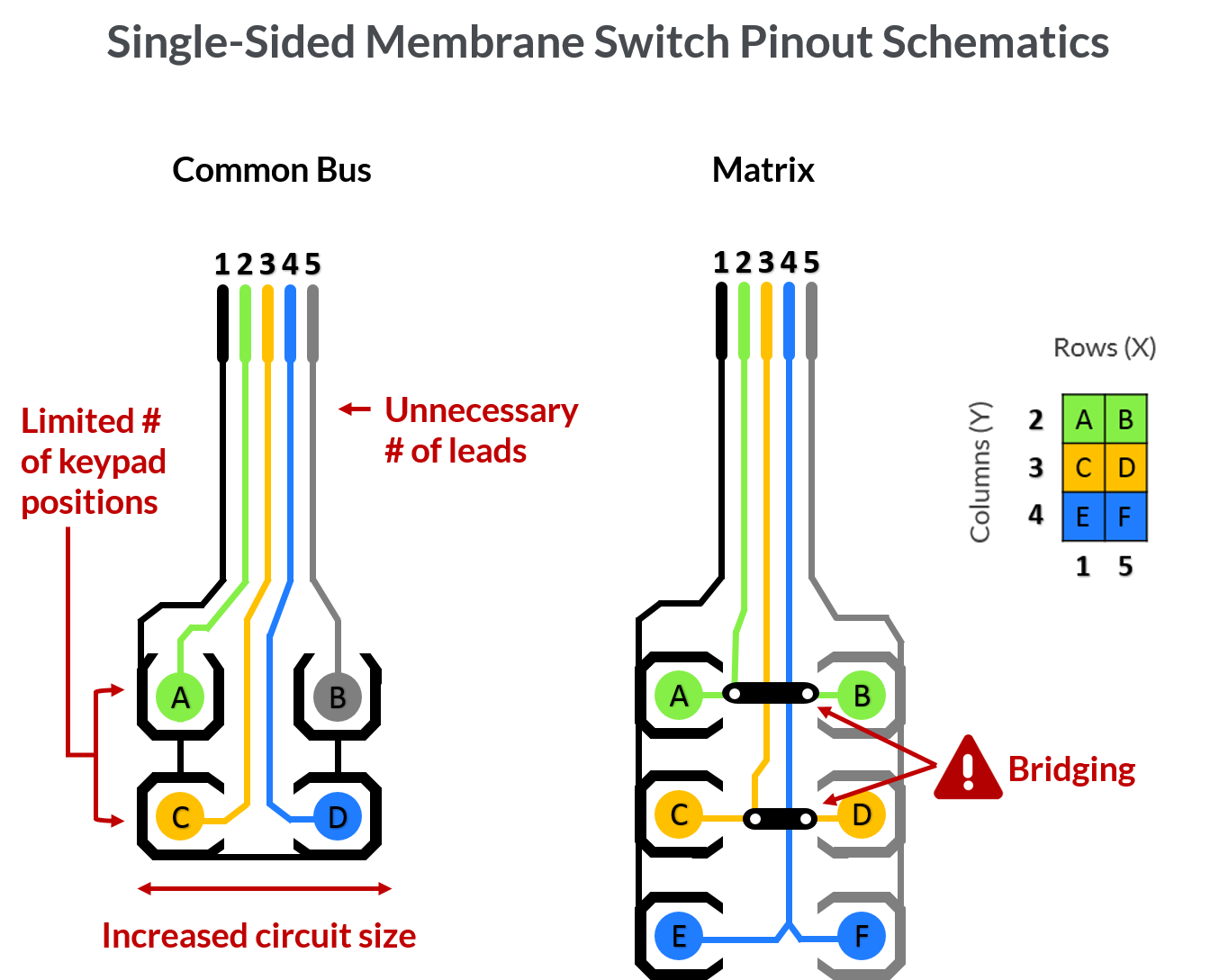The Complete Guide to Membrane Switch Modern Technology and Its Applications
The Complete Guide to Membrane Switch Modern Technology and Its Applications
Blog Article
Comprehending the Capability of Membrane Layer Changes for User Interface Instruments
The functionality of membrane switches stands for a substantial advancement in individual interface layout, integrating performance with visual convenience. As industries significantly prioritize individual experience, comprehending the nuances of membrane switch technology ends up being important.
What Are Membrane Switches?
Membrane switches are ingenious user interface tools that help with user interaction with electronic tools. These flexible components include several layers, including a graphic overlay, spacer, and a published circuit layer. The layout enables a smooth combination right into numerous digital tools, improving both the visual and functional aspects of individual interfaces.
Membrane layer switches are commonly utilized in a variety of applications, from household home appliances to commercial equipment and medical tools. Their construction normally features a thin profile, making them an optimal choice for portable designs. The responsive feedback given by these switches can be crafted to fulfill particular user preferences, making sure efficient communication in between the user and the device.
Durability is another substantial benefit of membrane layer switches, as they are resistant to dirt, dampness, and chemicals, which improves their life expectancy sought after environments. Additionally, these buttons can be customized in regards to form, dimension, and graphic layout, enabling branding and user-specific attributes. On the whole, membrane layer changes stand for a useful service for enhancing user experience in digital tools, integrating performance with aesthetic charm in an efficient way.
How Membrane Changes Work
Operating on a straightforward concept, membrane layer switches use a split construction to register user input properly. Each button contains multiple layers, consisting of a printed circuit layer, a spacer layer, and a top graphic layer, which are designed to work with each other perfectly. When a user presses the leading layer, it compresses the spacer layer, bringing the conductive aspects of the circuit layer right into call with each other.
This contact produces a shut circuit, indicating the tool to execute a particular function. The style enables for various configurations, consisting of tactile comments, which can boost the individual experience by supplying a physical sensation upon activation. The materials made use of in membrane layer switches frequently consist of flexible substratums, such as polyester or polycarbonate, which ensure longevity and durability against deterioration.

Key Benefits of Membrane Switches

Another substantial advantage is their density. Membrane layer switches are thin and light-weight, which makes it possible for makers to conserve space in their gadgets without sacrificing functionality. This attribute is especially beneficial in applications where weight and volume are essential considerations.
Furthermore, membrane layer buttons are immune to dust, moisture, and chemicals, boosting their toughness. This strength prolongs their life-span and reduces the need for constant substitutes, resulting in expense savings with time.
Moreover, the responsive feedback supplied by membrane switches can be enhanced to boost individual communication. They can consist of attributes such as elevated buttons or audible clicks, improving use and user experience.
Applications Across Industries
Interface devices making use of membrane layer switches are widespread in a broad variety of sectors, showcasing their flexibility and performance. Membrane Switch. In the clinical field, membrane buttons are indispensable to gadgets such as diagnostic tools and client monitoring systems, where their resilience and simplicity of cleansing are important for maintaining hygiene criteria. In the auto industry, these switches are used in control panel controls and infomercial systems, offering a sleek and contemporary user interface for individuals.
In addition, the consumer electronic devices sector take advantage of membrane switches in home appliances and portable gadgets, where small style and straightforward interfaces enhance user experience. Industrial applications likewise leverage membrane layer switches for Visit This Link control board in machinery and automation systems, emphasizing their effectiveness and resistance to extreme atmospheres.
In the aerospace and defense industries, membrane layer switches are utilized in cockpit controls and tools, where reliability and performance under severe conditions are critical. Additionally, the pc gaming industry increasingly includes membrane switches in controllers and arcade makers, adding to an engaging customer experience. In general, the flexibility of membrane changes allows their prevalent usage throughout numerous industries, highlighting their relevance in modern-day customer interface layout.
Future Patterns in Membrane Switch Over Technology

Additionally, the use of innovative products, such as polycarbonate and polyester films, is anticipated to rise, giving boosted resilience and resistance to ecological stress factors. These products contribute to the total longevity of membrane switches, making them appropriate for harsher commercial applications.
Additionally, the unification of clever innovation, including IoT connection, will certainly allow membrane buttons to interact with various other tools and systems, assisting in a more interactive individual experience. This trend lines up with the growing demand for smart devices across different industries, from health care to customer electronics.
Lastly, customization options are prepared for to increase, read what he said permitting makers to create bespoke remedies tailored to specific customer demands and choices. These developments will certainly position membrane layer switches as vital components in the development of interface innovation.
Verdict
In conclusion, membrane switches my explanation stand for an essential development in individual interface innovation, using a reliable and functional solution for diverse digital applications. As developments in material scientific research and touch picking up innovations continue, the functionality and applicability of membrane layer buttons are anticipated to broaden, strengthening their relevance in modern electronic devices.
Report this page